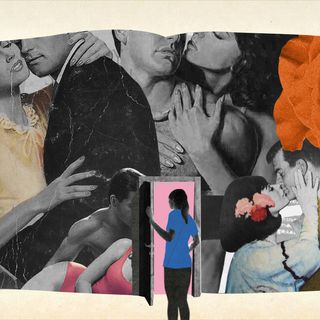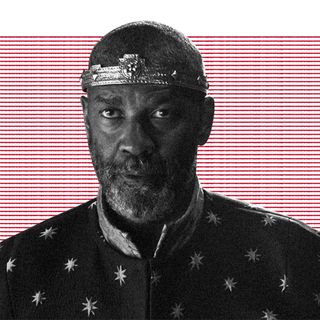
How Relevant Are ‘Hangout Shows’ When Friendships Don’t Look the Same?
The premiere of “How I Met Your Father” hints at the datedness of hangout shows — a group of friends just sitting around is no longer a believable aesthetic.

A gang of four or more people, a quaint booth with a reserved spot, an unsaid agreement to meet at the start/end of workdays, an attention span to make it through hour-long conversations. This set-up was evokedfairly recently when How I Met Your Father, a sequel to How I Met Your Mother that no one asked for, became the latest edition in the long line of “hangout shows.”
This particular sub-genre of television found its peak during the Friends era. Versions of the said hangout emerged efficiently — some crowded a booth at MacLaren’s or Monk’s, some took to occupying a friend’s house at any and all hours. The classic hangout show is comforting, nostalgic, and a reminder of simpler times. But what happens when a premise of the past tries to make itself relevant today?
This is not to say that hangout shows don’t have redeeming qualities. Theirmost subtle win lies in the effortlessness of their compositions. The low-stake comedy relies on quippy banter, light-hearted slingers, a group of friends choosing to be family. There’s no shared goal to do or achieve something together — no mysteries to solve or work to get done — thesejust frame their personal and professional lives but aren’t central to them.
These shows then had the distinct winning factor of letting some 20 and 30-year-olds work through their lives — their crises, meltdowns, failures on full display. “In its purest form, however, the hangout comedy centers on a group of friends who genuinely care for one another attempting to solve the impenetrable riddle known as ’emerging adulthood,'” Josh Sorokach explained in Decider. To think these young adults doing nothing but good-old chilling in a habitat they selectively choose as their home is a liberating premise.
This earthiness and familiarity work in tandem with the presentation format too. These are multi-camera shots, filmed in front of a live studio audience — “making them more like theatrical productions that could pause for audience reactions (that were later sweetened),” writer Lauren le Vine argued in Refiner29. Everyone, even the viewers, felt part of the gang. This feeling of belonging inspired a legion of derivates: Girlfriends, The Big Bang Theory, Happy Endings, New Girl, to name a few. Watching them now is like playing a period piece — when technology hadn’t breached every thought.
Which means most of their charm and elegance lie in the past, when the metric for living wasn’t spliced thin. For one, the premise we love is wildly unbelievable today. It’s terribly hard to make plans, let alone believe that a group of people would sit around without simultaneously looking at their smartphones. There are many assumptions here: the people in question have a healthy work-life balance to actually meet up on a workday; they have the bandwidth to engage with others on a regular basis; every member of the gang is available for every hangout sesh; they would engage fully with others without getting distracted. “Getting all of your friends in one place is a Herculean effort that’s a sitcom plot in and of itself. An interesting one? Probably not… Millennials’ lives are increasingly solitary pursuits, yet we feel connected to our friends through virtual and digital tethers,” le Vine pointed out.
Related on:
Music From Happier Times Is Dominating Playlists Under Lockdown
One Twitter user confidently noted recently: “when people on a tv show are having a full breakfast hangout at like a diner before their 9-5 work days I’m like. that CAN’T be realistic.”
Two, some fault lies with our attention span. Comedy like this takes time to grow on people and demands some level of loyalty from the viewers. One could say it was easier to commit before because of multiple reasons — the viewer felt part of the gang, there were fewer distractions (social, political, cultural) fighting for our regard, it was refreshing to watch people go through real-life struggles. Or, in some cases, there was a hint of escapism. Even back then, it wasn’t easy to hang out every day, live in spacious apartments while working average jobs (or not working in some cases) unless one came from a comfortable background. The hang-out shows’ presentation made a vicarious pipe dream accessible at a mass scale.
Irrespective, it was relatively easier to tune in every week, even if to just listen to quips and witness relationship dynamics. But bringing the “hangout shows” to the 21st century, one chequered with stress and domineered by the internet, would breach the integrity of the concept. No one wants to watch people sit together and swipe on Tinder, or tweet while drinking at a booth. “It’s harder than it looks, the ‘put a bunch of attractive people in a room and put a camera on them’ kind of show. It’s hard, period,” Linda Holmes noted in NPR.
Plus, it’s getting increasingly hard to keep these on-screen characters apolitical and not actively engage with contemporary issues. This is not to say they must talk about politics, the climate crisis, or cultural shifts in a contrived manner. But to portray a group of apolitical people without a care for what’s happening around them is a display of privilege no one quite wants to sign up for.
Add to this crisis of attention is the whole streaming competition and the limited relevance of linear TV in general. Streaming platforms like Netflix, Amazon, Hulu have long threatened solid programming of networks; hangout shows asking viewers to turn in each week then feel unfeasible and burdensome. As Sorokach added: “From a purely fiscal standpoint, it’s rarely a profitable endeavor. For every Friends, there are 100 Union Squares. How I Met Your Mother ran for nine seasons. Inside Schwartz aired nine episodes. The formula is deceptively simple, but the execution is an almost impossible amalgam of moving parts.”
Given the ever-increasing scope of platforms and the kind of content, our collective attention has contracted to one tiny blob. The gang on the screen may be affable, but also easily replaceable. Perhaps, television doesn’t serve the purpose it did back then. “Watching TV may soon be a pastime of older generations, like listening to the radio and knowing how to use a fax machine,” le Vine added.
Arguably, there’s a sweetness to watching people enjoy each other’s companies, separated from the real world and its gnawing demands. No mails, no fear of missing out, no social crises demanding them to unlearn and relearn. In that sense, it’s like watching a period piece. But this time around, nostalgia may not be enough to keep this world of easy, wispy hangout buoyant.
Saumya Kalia is an Associate Editor at The Swaddle. Her journalism and writing explore issues of social justice, digital sub-cultures, media ecosystem, literature, and memory as they cut across socio-cultural periods. You can reach her at @Saumya_Kalia.
Related


Why Does ‘Euphoria’ Insist on Sexualizing Teen Girls?
